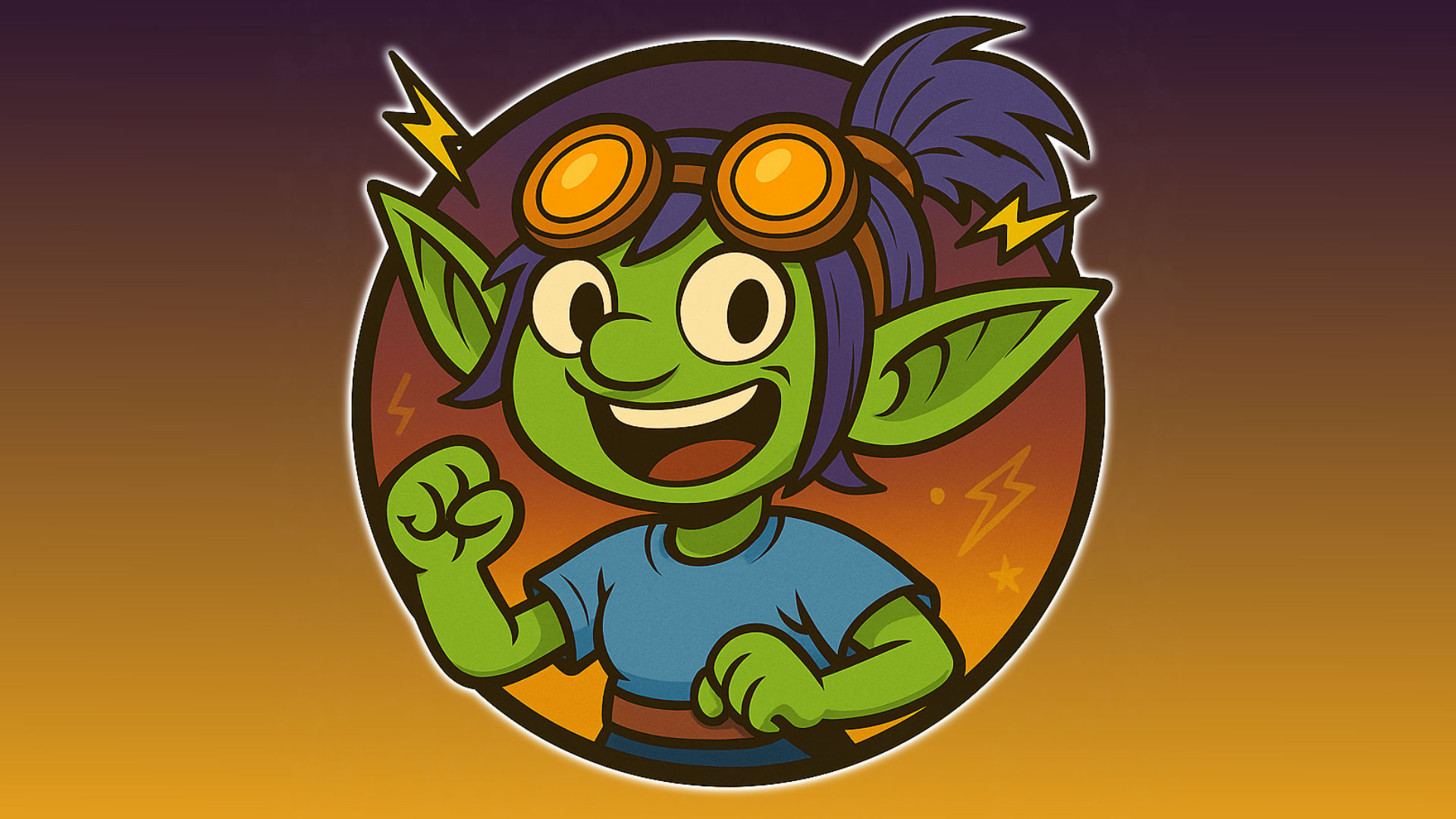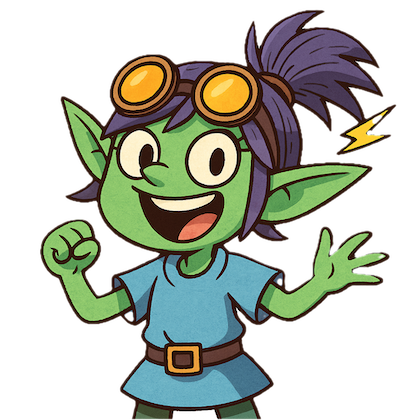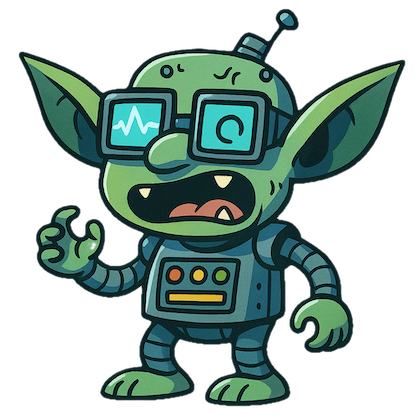
 Education Futures
Education FuturesWe gamified cheating with AI … with a little help from goblins
At Education Futures, we believe that learning happens best when curiosity meets a bit of mischief, something often experienced in play. With Goblinly (English) and Trampi.ar (Spanish), we are exploring what happens when we gamify cheating with AI. That is, cheating not to promote dishonesty, but to build a new kind of ethical cheating that rewards critical thinking, transparency, and reflection.
Goblinly and Trampi.ar are both open for a limited public preview. Send your feedback to us at [email protected].
Redirecting “cheating” into learning
Both Goblinly and its Spanish-language localization, Trampi.ar, start from a truth many educators find uncomforting: students already use artificial intelligence to assist with academic work. Instead of framing this as misconduct, the platforms use it as an entry point for developing critical literacy, the ability to read deeper, analyze, evaluate, and interpret the behavior and biases of machine-generated text. These apps are geared for lower-secondary aged students, but the same approach can be geared for learners of all ages.

In Goblinly, students submit prompts to a cast of AI-driven “goblins,” each representing distinct rhetorical tendencies, reasoning styles, and interpretive flaws. The responses are often clever yet inconsistent, inviting students to identify which goblin produced each answer and justify their choices. This activity transforms a potential act of plagiarism into a structured literacy task that strengthens analytical reading, metacognition, and argumentation. Gamified features such as collectible goblins, customizable avatars, and experience points sustain engagement while maintaining a focus on comprehension and reflective judgment.
Through Trampi.ar, these same experiences become accessible to Spanish-speaking learners across the Americas. The localization preserves the core mechanics of Goblinly but adapts the linguistic and cultural nuances of humor, tone, and context, ensuring that players can explore the quirks of machine-generated language in their own idiom.
Both versions promote a deeper understanding of how large language models construct meaning, simulate reasoning, and present uncertainty as confidence. By learning to detect bias, inconsistency, or rhetorical manipulation, students strengthen their ability to read AI critically. That is, they move beyond surface fluency toward deep comprehension. What begins as “cheating” becomes an exercise in intellectual honesty, a form of ethical cheating where learners uncover the logic, limits, and latent assumptions of the machines that now write beside them.
An “honor among thieves?”
The idea of ethical cheating carries a productive tension. On its surface, it contradicts the moral foundations of schooling. Yet, when reframed as an act of open inquiry rather than deception, it becomes a path toward integrity. In Goblinly, there is honor when students stop hiding their use of AI tools and start reflecting on how they work. It is the difference between using a shortcut to evade learning and using it to examine how knowledge is made.
Within this playful space, students become collaborators in mischief. They test ideas, uncover patterns in machine reasoning, and learn from each other’s interpretations. What might look like trickery becomes a coöperative search for understanding. This shared play cultivates humility: learners discover that neither human nor machine possesses complete authority over truth.
An honor among thieves also signals a moral shift in education’s relationship with technology. Honesty in the age of AI no longer means avoiding the tools that generate text, but acknowledging their presence and questioning their influence. It invites teachers and students to treat “cheating” as data, a clue to what learners find meaningful, confusing, or motivating.
By engaging with AI transparently, students practice discernment, empathy, and ethical reasoning. They learn that the line between assistance and authorship is not fixed but negotiated. Humor makes this negotiation approachable; it transforms anxiety about dishonesty into curiosity about cognition. In this way, the goblins are not accomplices in wrongdoing. Rather, they are guides in learning how to think critically, playfully, and responsibly alongside machines.
This mindset extends naturally into the classroom. Goblinly and Trampi.ar are designed for both play and teaching. Their structure allows educators to translate this curiosity and reflection into meaningful, assessable learning experiences.
Teaching with Goblins

For educators, Goblinly and Trampi.ar include a set of classroom resources that turn playful exploration into structured learning. The Teacher’s Guide (currently available to pilot partners) outlines objectives, discussion strategies, and alignment with literacy and science standards. Complementary sample lesson plans show how to adapt the platform for different learning goals and subject areas:
- Analyzing tone and point of view: Students interpret a goblin’s response to a historical question such as “Explain the causes of the French Revolution for a reluctant crowd of students.” Through annotation and guided discussion, they identify linguistic cues that signal bias or neutrality, then write their own short historical narratives in distinct voices.
- Evaluating scientific reasoning: In group-based play, students examine a goblin’s flawed explanation of a process like photosynthesis. Working collaboratively, they identify weaknesses using the claim–evidence–reasoning model, rewrite the response for clarity, and reflect on how language shapes scientific argumentation.
- Cross-disciplinary inquiry: Teachers can integrate English and social studies to explore rhetoric and persuasion. For example, students evaluate goblin responses to a prompt such as “Should schools ban cell phones?” and then compose their own paragraphs emulating one goblin’s rhetorical stance while maintaining factual integrity.
Each plan includes clear objectives, guided and independent practice, and assessment strategies such as annotated responses, exit tickets, or notebook entries.
Teachers can also create class groups to track progress, review student tags, and celebrate growth. Leaderboards are used for motivation rather than competition, emphasizing collaboration and reflection.
Implementation guidance encourages small pilots, connection with existing literacy rubrics, and integration with learning management systems for continuity. These resources ensure that Goblinly fits into real classrooms as a scaffold for deeper reading, reasoning, and discussion.
Join the public play test
Both platforms are now in pilot testing across the Americas. We are inviting teachers, schools, and sponsors to help us expand this experiment in playful AI ethics.
Visit goblinly.com and trampi.ar to explore the games and provide us your feedback!



